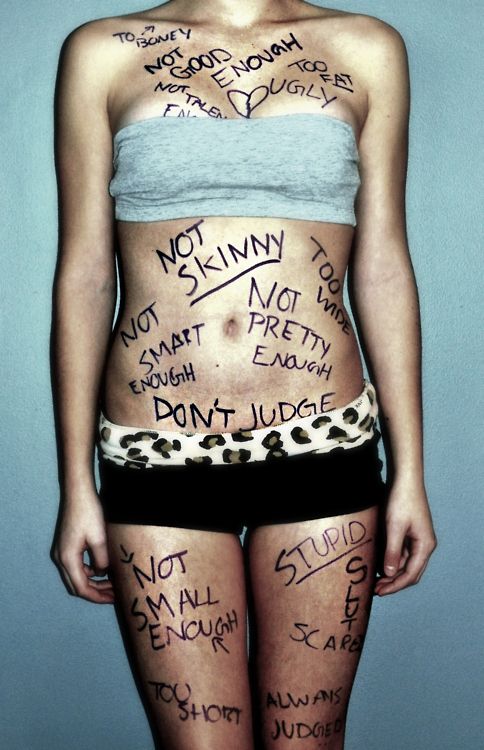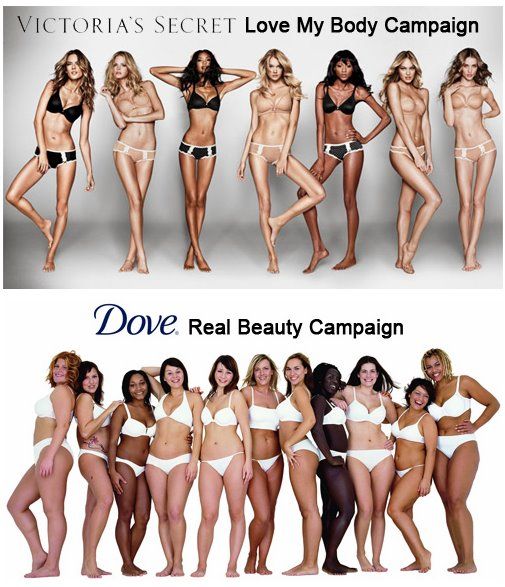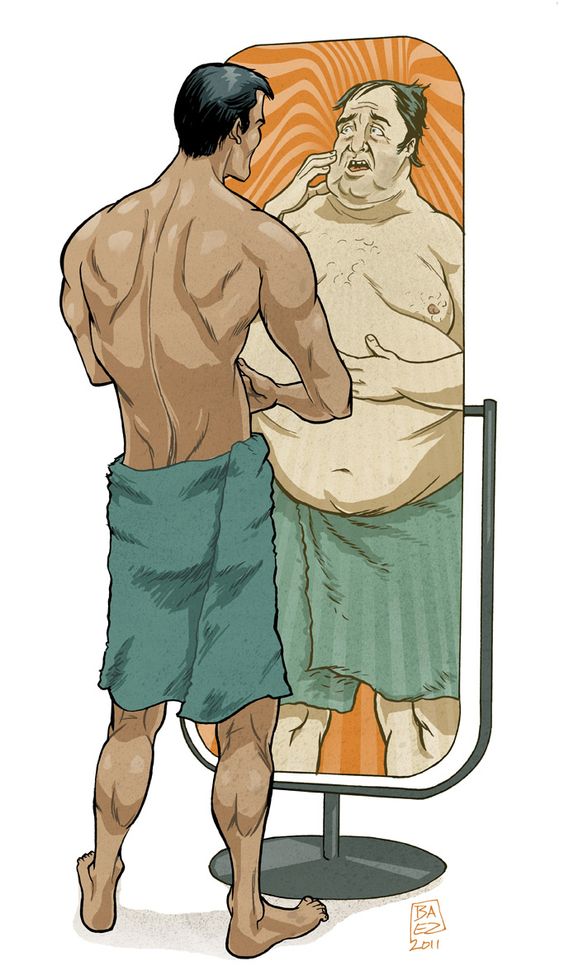People nowadays think that they know every fact about mental health before they even get their facts straight. Because of that, there are so many misconceptions about eating disorders. Read on to clear up the confusion between myths and facts about eating disorders.
Myth #1: You can tell someone has an eating disorder simply by looking at them.

Photo courtesy of pinterest.com
Individuals with eating disorders come in all shapes and sizes. Many individuals with severe disorders including bulimia, binge eating, and EDNOS (eating disorder not otherwise specified) can be underweight, normal weight, overweight or obese and often fluctuate in weight. For example, people with anorexia nervosa do not necessarily look emaciated.
Myth #2: Mothers are to blame.
Though mothers can be a factor, they are not the cause for all eating disorders.
Myth #3: Eating disorders are a choice.
People do not choose to have an eating disorder. They can choose to pursue recovery, but eating disorders are grave and they have mental and physical consequences. In most cases, eating disorders become a way of coping with intense emotions and traumatic life events. It is not always just a matter food, weight, and body image.
Myth #4: The media causes eating disorders.

Photo courtesy of pinterest.com
Eating disorders are serious illnesses that have biological, genetic and psychological causes. Messages about weight and beauty, including photoshopped images, in the media can certainly impact a person’s body image and stimulate pressures to look a certain way, but they do not cause an eating disorder.
Myth #5: The only eating disorders are anorexia nervosa and bulimia nervosa.
There are many more types of eating disorders besides the two mentioned above: EDNOS (Eating Disorder Not Otherwise Specified), binge eating disorder (BED), ED-DMT1 (Diabulimia) and other varying degrees of undiagnosed disordered eating.
Myth #6: Binge eating disorder isn’t an eating disorder.
People with BED overeat regularly due to stress or anxiety. Yes, we all eat an entire bag of chips once in a while, but binge eaters have this urge on a daily basis.
Myth #7: People who binge eat are overweight or obese.
This does tend to be the trend with people who are diagnosed with binge eating disorder. But, people who binge eat can be normal weight; they are not always noticeably overweight.
Myth #8: Binge eating disorder is the same as bulimia.
The two disorders do seem similar because in both cases, this person will eat a large amount of food. The one major difference is that after a binge, people with bulimia try to rid themselves of the extra calories by “purging,” which could be vomiting, using laxatives or diuretics (water pills), or over-exercising.
Myth #9: People who have three meals a day are not anorexic.
Fasting is not the only way anorexics try to lose weight. They can restrict their three normal-sized meals to three very tiny meals, but they can also eat normally for a week, and then go on a severe calorie restriction the next week. Anorexics can also eat only sugary snacks so that they have enough energy to get through the day.
Myth #10: Anorexics eat nothing at all.
This is not always the case with anorexia. People with anorexia may avoid certain foods they’re afraid of, or may limit their consumption of carbs or sugar, but eat a lot of protein.
Myth #11: Bulimics always throw up to purge.
Again, people with bulimia try to rid themselves of the extra calories by “purging,” which could be vomiting, or using laxatives or diuretics (water pills), or over-exercising.
Myth #12: Anorexics do not binge or purge.
Many people with anorexia will occasionally binge or purge. Some anorexics are so fearful of certain foods that they will purge whatever they put into their system.
Myth #13: Only white, middle class girls develop eating disorders.

Photo courtesy of pinterest.com
Most individuals that develop eating disorders are actually middle-aged women. There are a decent amount of men with cases of eating disorders. People across all socioeconomic groups experience eating disorders.
Myth #14: Men who get eating disorders tend to be gay.
Sexual orientation has no causation to eating disorders.
Myth #15: You cannot suffer from more than one eating disorder.
Individuals often suffer from more than one eating disorder at a time. Bulimarexia is a term that was coined to describe individuals who go back and forth between bulimia and anorexia simultaneously.
Myth #16: People develop eating disorders to get attention.
People with eating disorders are not seeking attention. They actually tend to hide the fact that they have a disorder and may not even recognize that they actually have a problem.
Myth #17: Eating disorders are an “adolescent phase.”

Photo courtesy of pinterest.com
Eating disorders are not solved unless one seeks out the appropriate treatment and support. It is not a phase; it is vital that the person gets help in an early stage so that their eating disorder does not drag on longer.
Myth #18: You cannot die from an eating disorder
People with bulimia are at a high risk of death. Bulimics have died from cardiac arrest which is usually caused by low potassium or an electrolyte imbalance. Others have died from a ruptured esophagus. Analysis has also shown that anorexia is four times more deadly than clinical depression, three times deadlier than bipolar disorder and two times more deadly than schizophrenia.


